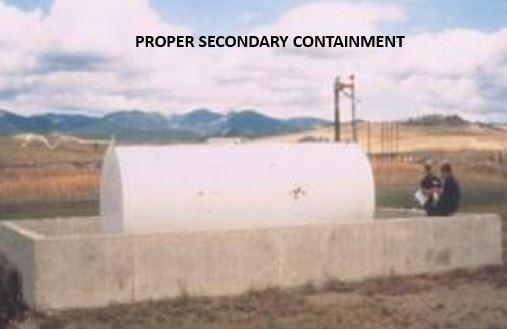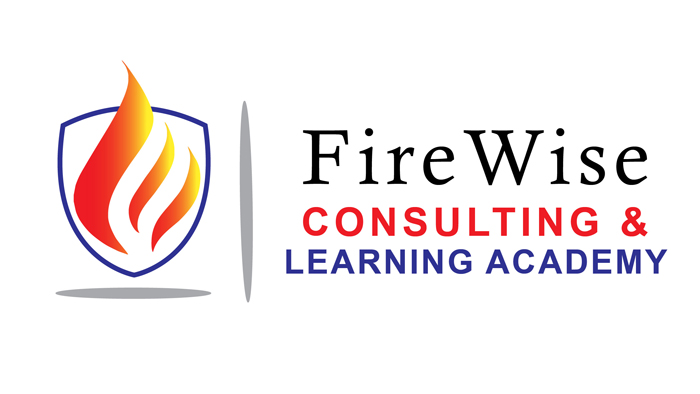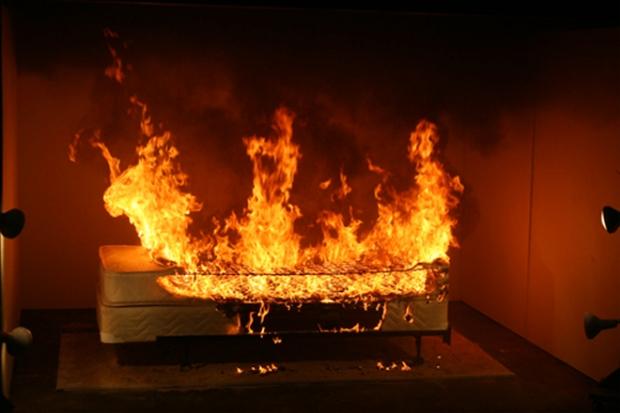
Oct 5, 2015
Ironically, the most dangerous thing about an occupation that involves running into burning buildings isn’t the flames, but the smoke. Cancer is the leading cause of firefighter line-of-duty deaths in the U.S. and, according to the International Association of Firefighters, about 60 percent of career firefighters will die this way, “with their boots off”. Click Click here to read more.
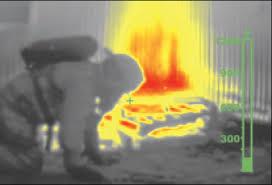
Sep 8, 2015
Barry Lavoie, an engineer at BAE Systems, says he can give firefighters in burning buildings the gift of sight. His invention, Thermal on Demand, is a face mask and imaging system that looks like a prop from a cyborg movie. Its three thermal-imaging settings allow firefighters to clearly see the outlines of obstacles in pitch-black conditions. Warm objects, such as a body or flames, appear as ghostly white figures.
- Click here to read more.
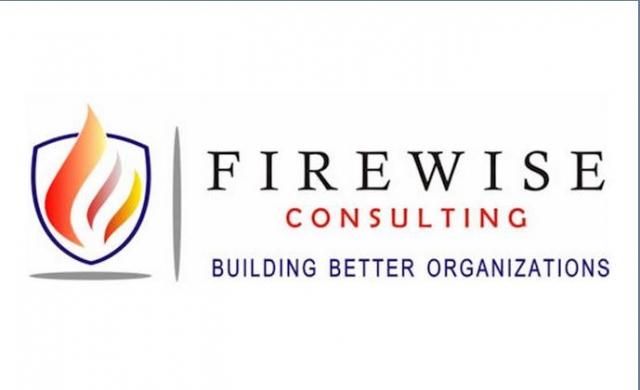
Sep 8, 2015
Most fire service leaders agree that fire prevention is far cheaper in all aspects than fire suppression. A lot of resources are required for local governments to provide fire inspections. A recent study found the majority of public buildings inspected are compliant. Over 70 percent of the properties identified in the study were fully compliant or had very minor deficiencies.
- Click here to read more.
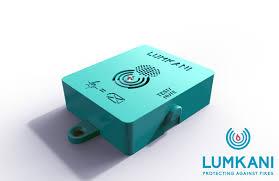
Sep 8, 2015
South Africa has 1.9 million people living in informal settlements. In these high population density communities, it is not uncommon for massive shack fires to erupt, spreading quickly and resulting in death and mass displacement. Lumkani, a South African based start-up, emerged in response to these fires and the limitations of Western-developed smoke detectors. Their solution is a device that both detects fires and alerts nearby residents.
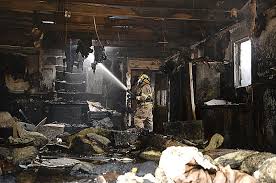
Sep 8, 2015
During the next three years, researchers at Case Western Reserve University will team with NASA Glenn Research Center and firefighters nationally, from Cleveland to Oregon, to design and test sensors aimed at protecting firefighters from respiratory damage and illness. The sensors will alert structural and wildland firefighters of hazards in the air after they’ve entered the phase called “fire overhauling or mop up.”
- Click here to read more.
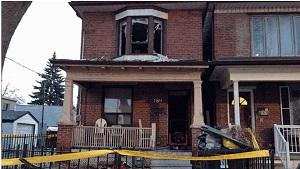
Sep 8, 2015
The owner of an illegal rooming house in Toronto’s west end has been slapped with a $60,000 fine after a fire at the home killed a tenant just under two years ago. The home’s owner will be on probation for 18 months and cannot possess or manage a rental property during that time.
- Click here to read more.
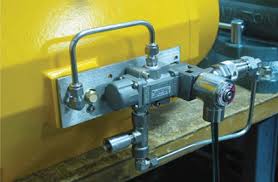
Sep 8, 2015
FM-approved FireChek thermal shutoffs with resettable memory shape alloy can now be used to automatically shut down a pneumatic control system when a nearby fire occurs, or when the ambient temperature reaches 135, 150, or 165⁰ F. The testability and reset ability of the FireChek separate it from emergency isolation valves that rely on fusible links or plastic burn-through tubing.
- Click here to read more.
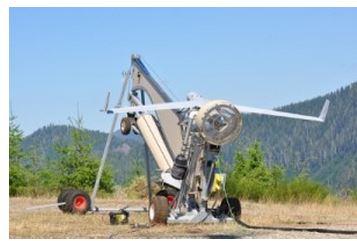
Sep 8, 2015
Insitu, the Boeing Subsidiary that makes unmanned aircraft systems, is helping emergency responders in Washington State as they work to tame wildfires that have spread across the Pacific Northwest, destroying and threatening thousands of homes. The company recently flew its ScanEagle surveillance drone over the Paradise Fire in Washington’s Olympic National Park.
- Click here to read more.

Sep 8, 2015
A campaign from New Zealand came up with an interesting idea to remind people to check their smoke alarms are working. It stresses how smoke alarms are our “only voice”, in other words our sole warning, in the event of a danger at night, by giving them human form.
- here to read more.
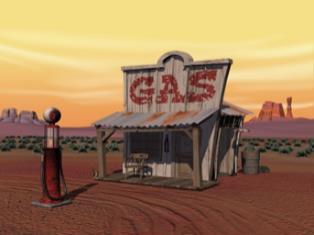
Sep 2, 2015
Fuel Dispensing Stations – Checklist
Definition:
Any premise where flammable or combustible liquids are dispensed from fixed equipment into the fuel tanks of motor vehicles, watercraft or floatplanes.
Above Ground Tanks
- The BC Fire Code limits the maximum size of a tank to 50,000 L and a total capacity 150,000 L
- Physical protection from collision – concrete island 100 mm high or posts and guardrails etc.
- Prevention of unauthorized access
- Measures must be taken to contain spills
- Installed on the ground or foundation of concrete masonry or steel – if subject to flooding be strapped
Location
Outside buildings
- 3 m from property line – 3 m from propane dispenser – 1.5 m from gas dispenser
- 6 m from ignition source – 3m from building openings – 6 m from propane tank
Underground Tanks
- Venting 3.5 m above ground – 1.5 m from bldg. openings – 7.5 m from dispenser
- Tanks that are taken out of service must comply with Part 4 of the BC Fire Code
Emergency Shut-off Device
Must be clearly identified, readily accessible and shielded from any fire
Portable Extinguishers –
Areas that handle flammable or combustible liquids are classified as extra hazard locations and require a minimum of two 10BC rated portable fire extinguishers to be located within a travel distance of 9 metres.
Delivery Hose
- Hose length restricted to 4.5 m
- Nozzles must be the automatic closing type.
No Smoking Signs required 200mm 25 mm high letters
Fire Safety Plan
The BC Fire Code requires a Fire Safety Plan which includes instructions to staff on how to deal with emergencies and measures to deal with spills.
Supervision
- At least one attendant must be on site while open for business
- The duties of attendant must be understood by all employees and be posted
Spill Protection
- The site must be graded to control spills
- Absorbent material must be readily available
Inventory Control for Underground Storage Tanks
Leak Detection Tools
- Paste for finding water – monthly
- Gauge stick – 1/8 inch increments not cut off or worn off at the “0” end
- Forms to record Daily & Monthly leak detection
Measurements
- Measure the tank every day that fuel is added or removed using a gauge stick or a mechanical or electronic tank level monitor.
- Step 1—Measure the Tank’s Contents
- Step 2—Record the Amount Pumped
- Step 3—Record Fuel Deliveries
- Step 4—Calculate Daily Changes In Inventory
- Step 5—Calculate Monthly Changes In Inventory
- Measure each tank every operating day
- Use gauge sticks that are marked to the 1/8 inch not cut off or worn off at the “0” end
- Measure just before each delivery
- Read and record totalizer meters carefully
- Check for water at least once a month using water-finding paste
